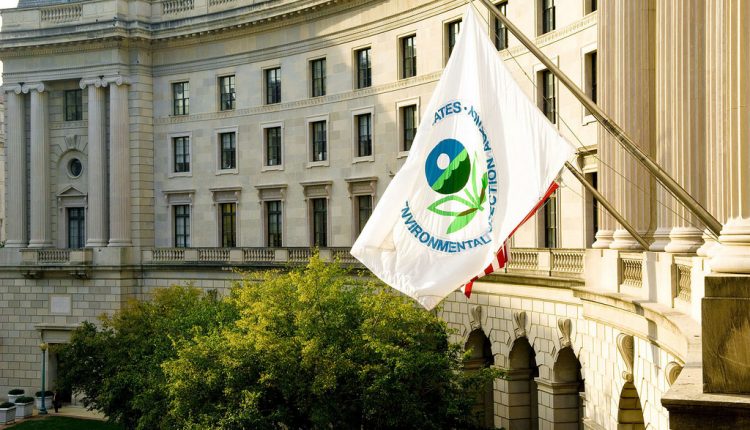
SBA Environmental Roundtable Meeting – December 4, 2020
***SBA Environmental Roundtable Meeting***
FRIDAY, December 4, 10 a.m. – 11:20 a.m.
Via Microsoft Teams Meeting
The next U.S. Small Business Administration, Office of Advocacy Environmental Roundtable will meet virtually to discuss the following topics, beginning at 10 a.m. on Friday, December 4, 2020. The meeting will be held using the Microsoft Teams platform.
Send your RSVP to david.rostker@sba.gov. A meeting link will be provided to you when you RSVP.
Agenda
10:00 AM – 10:20 AM Introductions and Update on Chemicals Designated as High Priority under TSCA
Dave Rostker, SBA Office of Advocacy
10:20 AM – 11:20 AM EPA’s Final Risk Evaluation for Carbon Tetrachloride
Claudia Menasche, Office of Pollution Prevention and Toxics, EPA
Implications of Carbon Tetrachloride Risk Evaluation for Feedstock and Laboratory Uses
W. Caffey Norman, Squire Patton Boggs, LLP
Roundtable meetings are open to all interested persons, with the exception of the press, in order to facilitate open and frank discussion about the impacts of Federal regulatory activities on small entities. Agendas and presentations are available to all, including the press. Anyone who wants to receive roundtable agendas or presentations, or to be included in the distribution list, should forward such requests to david.rostker@sba.gov. The purpose of these Roundtable meetings is to exchange opinions, facts, and information and to obtain the attendees’ individual views and opinions regarding small business concerns. The meetings are not intended to achieve or communicate any consensus positions of the attendees.
Small Business Environmental Roundtable
Issues for Discussion
December 4, 2020
EPA’s Final Risk Evaluations for Carbon Tetrachloride
EPA recently published its final risk evaluation for the fourth of its 10 high-priority chemicals under the amended Toxic Substance Control Act (TSCA). Carbon tetrachloride is used in commercial settings as a raw material for producing other chemicals like refrigerants, chlorinated compounds, and agricultural products in accordance with the Clean Air Act and Montreal Protocol. Carbon tetrachloride is not currently used as a direct reactant or additive in the formulation of consumer products.
EPA completed the final risk evaluation for carbon tetrachloride in October 2020. The final risk evaluation shows that there are unreasonable risks to workers and occupational non-users for 13 of the 15 conditions of use EPA evaluated. This includes unreasonable risks when manufacturing the chemical; processing the chemical as a reactant or intermediate and into formulation of other products; laboratory uses; recycling; uses in a variety of industrial and commercial applications; and disposal. Unreasonable risks to workers and occupational non-users can come from long-term inhalation or dermal (through the skin) exposures. A final determination that a condition of use presents an unreasonable risk of injury to health or the environment means that the agency will have to regulate those risks, which can include use-restrictions or bans, among other options.
The agency is currently in the process of developing ways to address the identified unreasonable risks and has up to one year to propose and take public comments on any risk management actions. Within this time frame, the agency will also have to consider whether any potential regulations for the identified risks will have a significant economic impact on a substantial number of small entities and if so, the agency will need to convene a small business advocacy review panel to seek advice and recommendations from representatives of affected small entities on the potential impact of the proposed rule. For this reason, it is important for small business stakeholders to be informed of the conditions of use that have been determined to pose an unreasonable risk and the basis for those determinations. At this roundtable, EPA will be providing an overview of this final risk evaluation, with time for discussion and questions.
W. Caffey Norman
W. Caffey Norman’s environmental practice focuses on the regulation of hazardous chemicals by the Environmental Protection Agency, the Occupational Safety and Health Administration, the Consumer Product Safety Commission, and various state regulatory agencies. He has been particularly active in the subject areas of toxic substances, stratospheric ozone depletion, and global warming. He has participated in EPA rulemakings to regulate hazardous substances under all the environmental statutes and has initiated legislative and judicial review of EPA regulations. Mr. Norman has successfully challenged several regulations in the U.S. Courts of Appeals. He is currently representing small businesses that use methylene chloride in litigation in the Second and Ninth Circuits challenging the first risk evaluation and product ban following the 2016 amendment of the Toxic Substances Control Act (TSCA) and represents four of the first ten substances subject to risk evaluations under amended TSCA.
